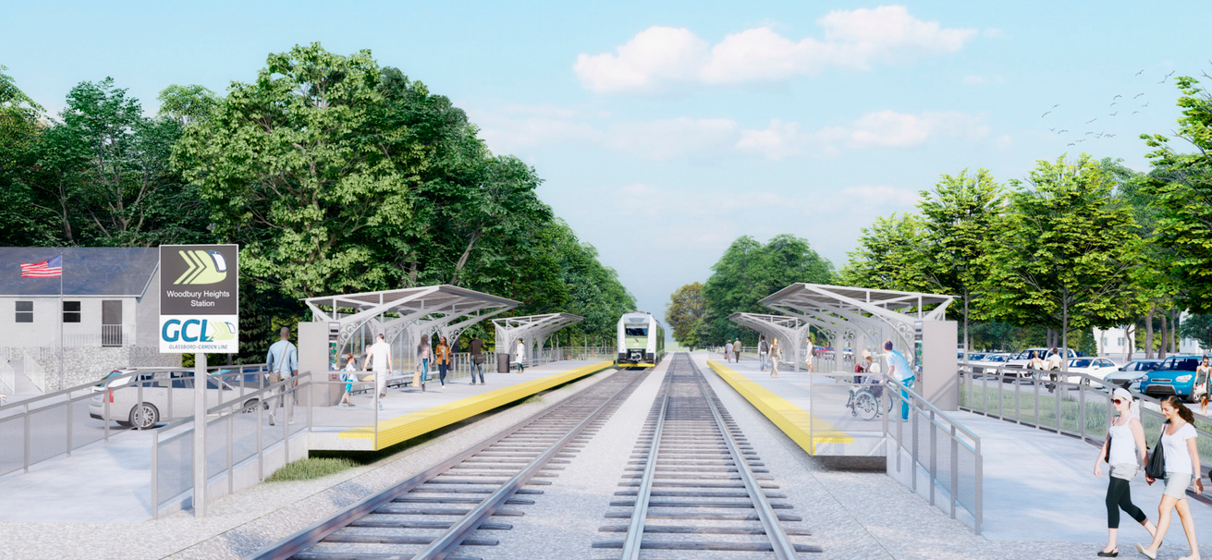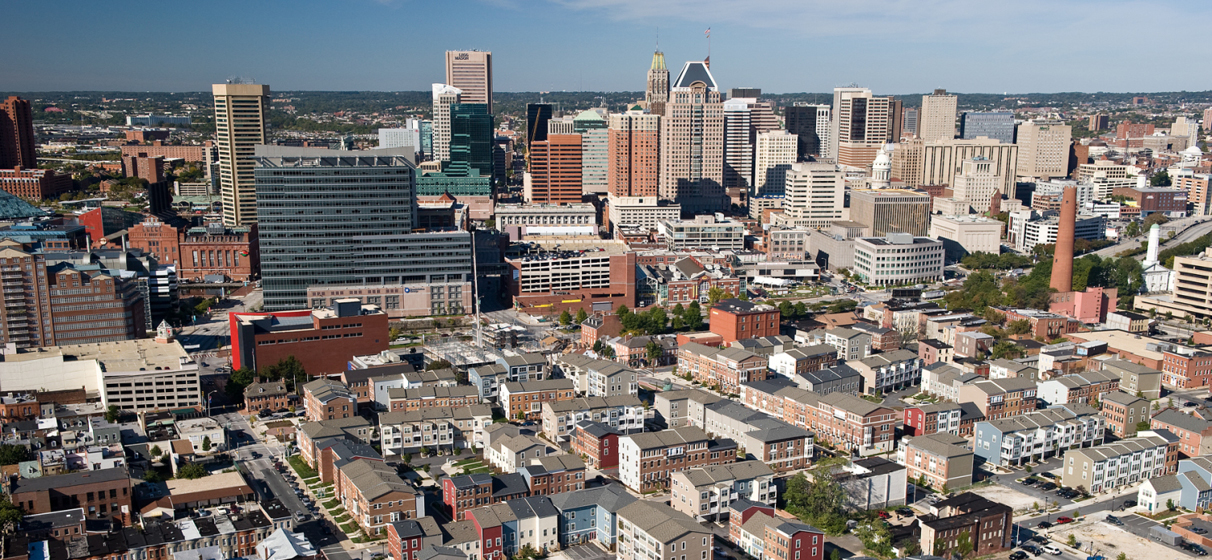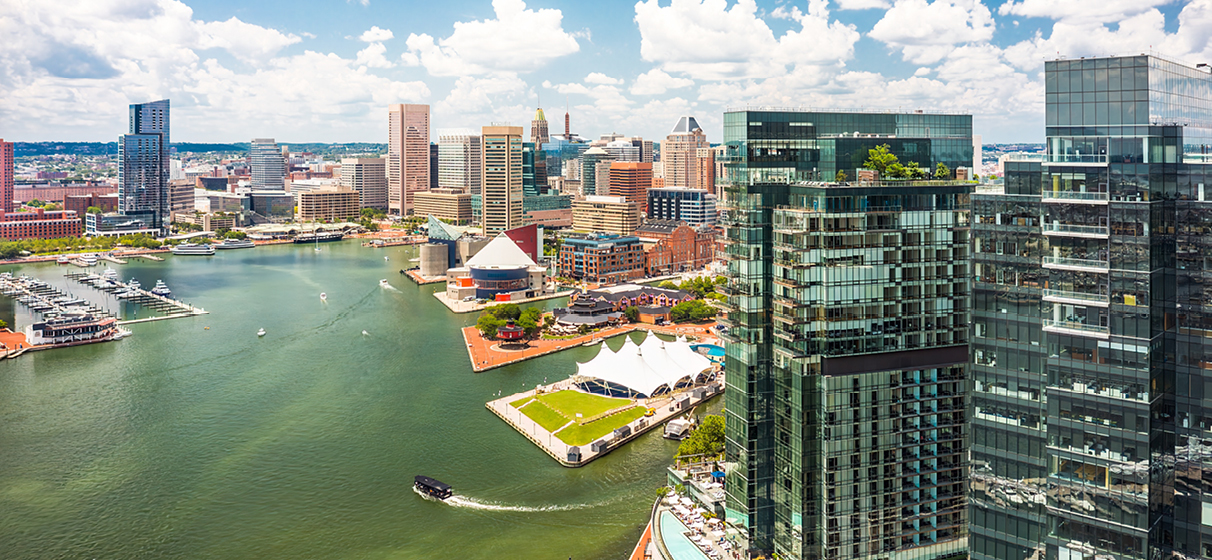Just across the Delaware River from Philadelphia, the City of Camden, NJ, is undergoing a major transformation – and STV is playing a key role in several infrastructure projects that are helping to reshape the city’s future.
Among them is the Glassboro-Camden Line (GCL), an 18-mile passenger rail corridor that will improve transit access across southern New Jersey. STV is currently leading preliminary engineering and design services for this future light rail line, which will connect the Borough of Glassboro in Gloucester County with downtown Camden in Camden County.
On behalf of Camden County and the Rowan University / Rutgers–Camden Board of Governors (RURCBOG), STV is also supporting the Camden Master Plan, which will help shape long-term development priorities for downtown Camden. And most recently, the firm began work on the Walter Rand Transportation Center (WRTC) Transit-Oriented Development (TOD) for the Camden County Improvement Authority (CCIA) – a mixed-use project also known as the Beacon Building that will bring new life to the city’s core.
The WRTC is the largest multi-modal transit hub in South Jersey. It currently serves 26 NJ TRANSIT bus lines, the PATCO Speedline subway, the NJ TRANSIT RiverLINE and provides shuttle connections for Greyhound and the South Jersey Transportation Authority (SJTA). In the future, it will also connect to the planned GCL light rail system.
In an effort led by NJ TRANSIT, the WRTC is undergoing a major improvement project to transform the existing facility into a modern, vibrant and customer-focused transit hub for Camden residents and visitors. This project is currently in the design concept phase.
To complement the WRTC upgrades, and in coordination with NJ TRANSIT’s improvement project, CCIA is leading the development of a new TOD on an adjacent surface parking lot. The project envisions a dynamic mixed-use district that supports transit connectivity while introducing retail, office, housing and hospitality opportunities.
“This is a truly intermodal opportunity – connecting cars, buses, subway and surface light rail – and CCIA sees this TOD as a catalyst for new development in the city,” said John Manzoni, vice president and project manager at STV. “The goal is to build a community that brings together transit, housing, jobs and civic life.”
STV is providing planning and architectural services for this TOD as a subconsultant to Gilbane. Our team recently completed Phase 1, a feasibility and visioning study, and is now advancing into Phase 2, which will further refine the project’s potential. Phase 3 will comprise full design development, with STV expected to lead additional disciplines and deliver comprehensive design services.
“This transit-centered development frames mobility as a canvas for the design of residential, civic, educational and office programs,” said Andrei Amiri, architectural design director at STV. “It invites us to look decades ahead, reflecting on how infrastructure can harmonize urban life by cultivating a sustainable ecosystem and reshaping connection, work and community through the potential of transit.”
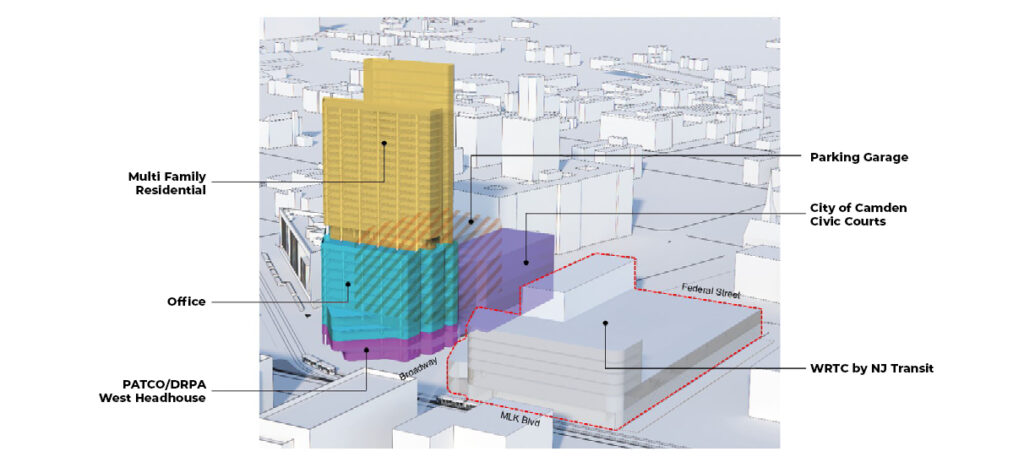
Located in the heart of Camden’s growing “Eds and Meds” corridor, the TOD site presents an opportunity to create a vibrant, mixed-use urban district that reflects the city’s forward momentum. The proposed development is anchored by Beacon Tower, a signature high-rise that will serve as a visual landmark and symbol of Camden’s future.
“The site is positioned perfectly,” said Jong Baek, vice president and design manager at STV. “It offers views of the Philadelphia skyline and the Delaware Riverfront, it’s highly visible from nearby highways and it connects all the major transit lines. If you want to make a statement about Camden’s future, this is the place to do it.”
The proposed development includes:
- The Beacon Tower, a striking new 25-story high-rise integrating a new entrance to the PATCO Broadway Station below, with ground-floor retail, office space and residential units above.
- A new Camden Civic Courthouse, relocating the city’s existing courthouse to the TOD site.
- A new 12-level parking structure, designed to accommodate future demand while reducing conflicts with transit operations.
“We’re designing seamless, multimodal transit into daily life in and around Camden,” said Paul Song, senior architect at STV. “At its heart is a high-density TOD, human-scaled at the foreground, with a signature tower marking the gateway and defining the skyline. It’s not just a project – it’s a connected urban experience.”
STV’s design strategy for the TOD is structured around three guiding goals:
- Transportation: The TOD aims to create a superior, multimodal transit experience for downtown residents, commuters and tourists by leveraging both existing and in-progress transit improvements. The Beacon Tower lobby will directly connect to the PATCO Broadway Station, offering seamless access to regional rail connections.
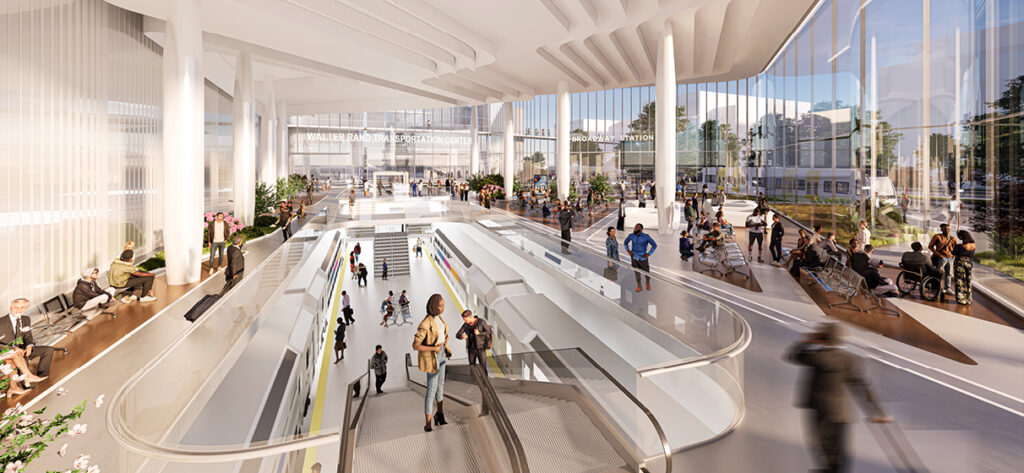
- Placemaking: At the street level, the TOD introduces Transit Square, a public plaza fronting Martin Luther King Jr. Boulevard. Combined with reimagined streetscapes and active ground-floor retail along Broadway, the plaza will enhance the commuter experience while activating the block for local residents and businesses. Plans include space for concentrated food, beverage and retail tenants to draw foot traffic and encourage community interaction.
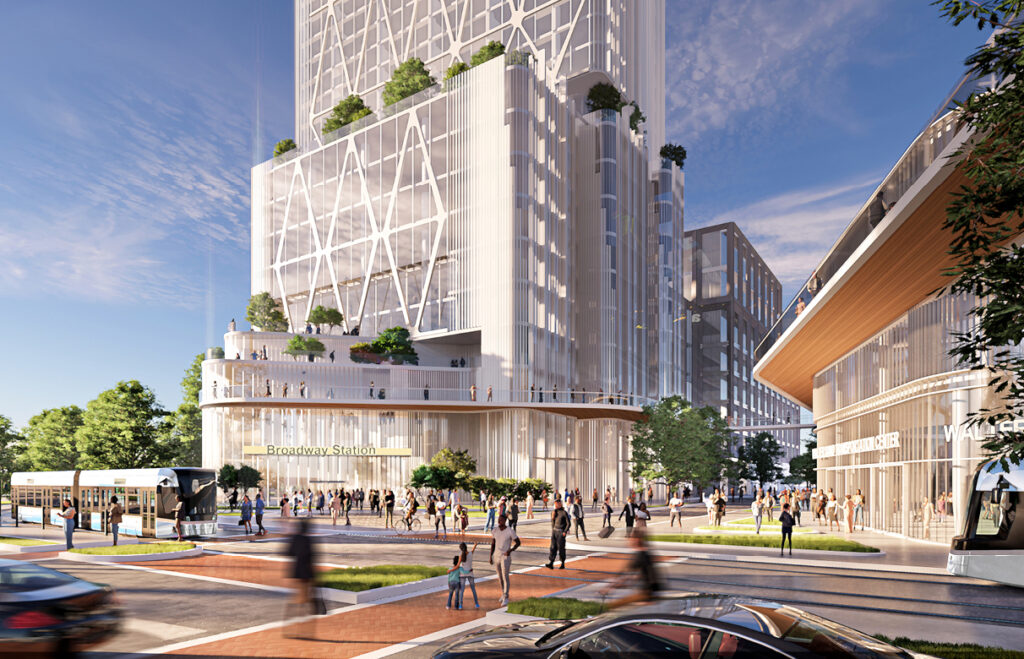
3. Development: The TOD is designed to position Beacon Tower as an iconic anchor that attracts future investment, boosts residential life downtown and supports Camden’s broader revitalization strategy. As Camden’s first high-rise building, the tower will signal the city’s readiness for vertical, mixed-use development and serve as a catalyst for future growth in the downtown core.
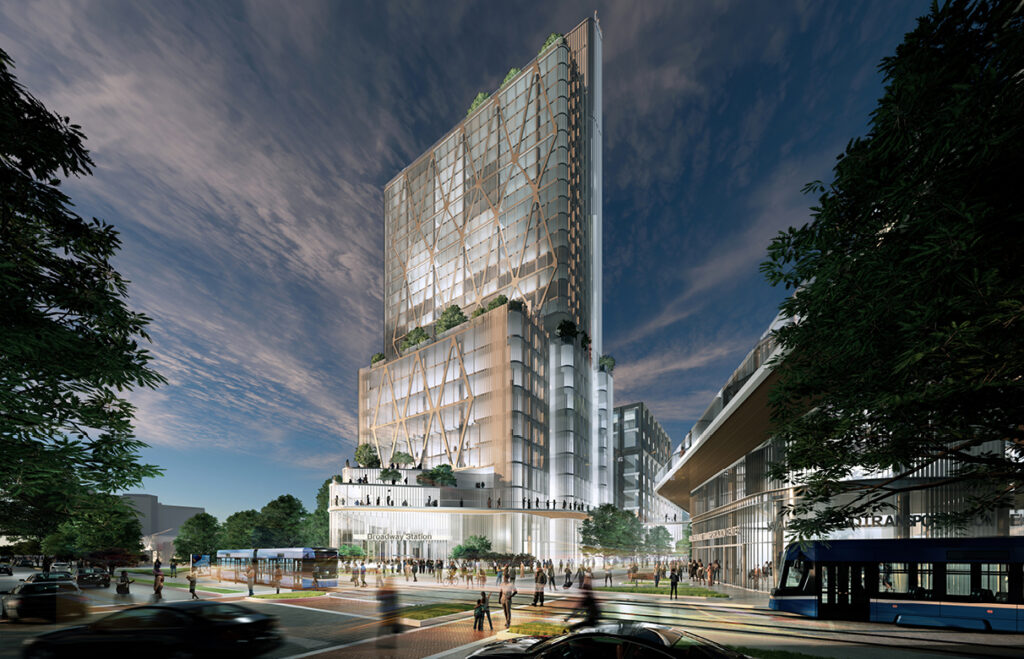
“This is a really exciting moment for Camden,” said Manzoni. “We have three major projects coming together – GCL, WRTC and the TOD – all intersecting at one location, and it’s incredibly rewarding to see how much opportunity there is for revitalization here.”

